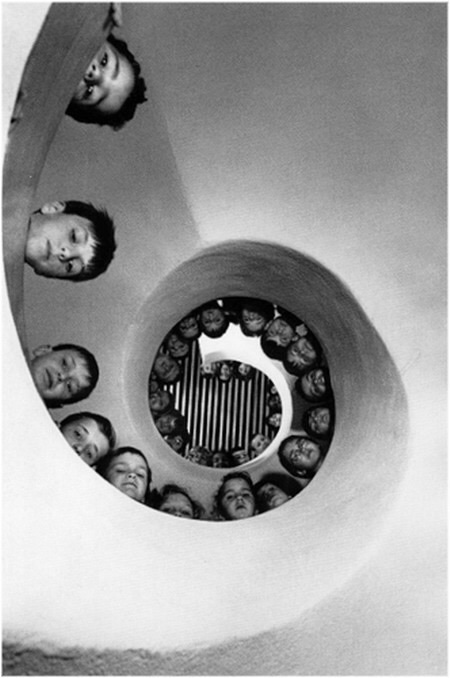Serendipity: I love the word. Last week, I had not one, but two, serendipitous moments. It all started when C1 got the following Maths problem as part of her homework.
Figured it out?
If your answers are 34, 55, 89, 144, 233…, you’re right. Guess you know about the Fibonacci sequence.
For those who didn’t get it, the answer is really simple.
All you have to do to get the next number is add the previous two numbers together.
This chain of numbers:
0, 1, 1, 2, 3, 5, 8, 13, 21, 34, 55, 89, 144, 233, 377, 610, 987… is called the Fibonacci sequence.
Here’s how I explained it to the kids:
As the story goes, Fibonacci’s real name was Leonardo Pisano Bogollo, an Italian who lived between 1170 and 1250. “Fibonacci” was his nickname. Roughly translated, it means “the son of Bonacci”.
Getting back to my serendipitous moments…
A few days after C1 got her Maths homework, my cousin Candy (who lives in another corner of the world) uploaded this link to her Facebook feed. It’s all about the Fibonacci sequence in Nature.
Yes, this cool mathematical sequence crops up time and time again in Nature. You can see it in the way leaves, flowers and trees grow, in the beauty of a perfectly coiled Nautilus shell (or even in a slimy snail’s shell). And, if you’re a space cadet, you can observe it in spiral galaxies…
My second encounter with serendipity was when I went for a walk on Sunday. Guess what? I kept noticing the Fibonacci sequence all around me.
There are heaps of examples of the Fibonacci sequence in everyday life.
Take the humble banana, considered the poor man’s food in India. If you push your finger through a peeled banana, it will naturally spilt into three sections.
Have a look at the bracts of a pinecone or the prickly skin of a pineapple. If you look closely, you will see a double set of spirals – one going in a clockwise direction, and the other going anti-clockwise. Count the spirals and you will get two sets of adjacent Fibonacci numbers – usually 5 or 8 from one side and 8 or 13 from the other.
Now look at these sunflower pics I clicked. Big, bright and bold, aren’t they? Zero in on their centres where the itty-bitty seeds are held together tightly.

In sunflowers, the spirals you see in the flower’s head are spaced according to the Fibonacci sequence. There are two sets of curves winding in opposite directions, starting at the heart of the flower’s head and radiating to the petals. Each seed is at a precise angle (Phi or the Golden Mean or – not Pi) from the next seed to create the Golden Spiral. It’s Nature’s way of optimising the number of seeds that can be packed into a sunflower to get the most light and nutrition. Pretty cool, eh?
(Some sunflowers follow the Lucas series – but that’s another blogpost.)
Ever notice how flower petals tend to be in groups of 3, 5, or 8? Even ordinary daisies have 34 petals – great for playing ‘She loves me; she loves me not…’ Fibonacci again!
Even the human body displays Fibonacci proportions. Look at your hands. You have 8 fingers, 5 digits on each hand, 3 bones in each finger, 2 bones in 1 thumb, and 1 thumb on each hand. Say it with me – Fibonacci!
Fibonacci Squares and Fibonacci Spirals
If you look at the diagram above, the side of each square equals the sum of the previous two squares. The squares become progressively larger following the Fibonacci sequence. You can continue adding squares around the picture and each new square will have a side which is as long as the sum of the last two squares’ sides.
Now, if you draw a curve from corner to corner of each square you will end up with a Fibonacci spiral.
Waves, the horn of a ram, storm clouds and ferns all curl and unfurl according to these ‘Golden spiral’ proportions. Yes, there’s mathematical precision even in the seeming randomness of Nature.
It’s not surprising then, that from ancient meditative mandalas and classical music and art, to modern-day architecture and popular culture, the Fibonacci sequence weaves its mathematical magic in and out of our daily lives.
I’ll end with this photo. Recognise it? It’s Henri Cartier-Bresson’s ‘Children on a Spiral Staircase’. The Fibonacci spiral in all its glory!
So tell me, did you know about the Fibonacci sequence? Have you noticed it around you? Did you like doing Maths as a kid?











What a cool way to learn maths! Nice one Alison!
LikeLiked by 1 person
Interesting, isn’t it? I loved Maths as a kid but it got really hard around Std. 8. I soon realised the importance of “practise makes perfect.”
LikeLike
I did know about it (comes from having parents who made me do lots of IQ puzzles) and as you say, you do encounter it a lot in nature. It also helps with photography too!
LikeLiked by 1 person
You’re right about the photography bit, Lorraine. I realised that only after I chanced up the Henri Cartier-Bresson photo above.
LikeLike
Pingback: ಸೂರ್ಯಕಾಂತಿ ಹೂವುಗಳು – ಒಂದು ಕಿರುನೋಟ – ಹೊನಲು·